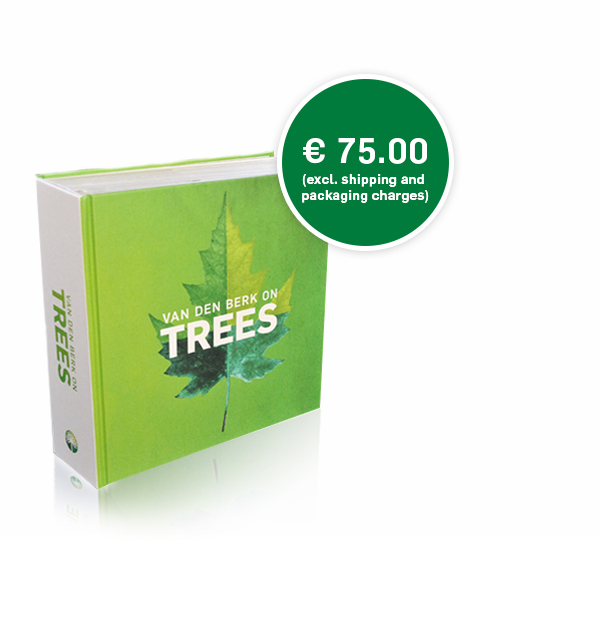The Second Edition of ‘Van den Berk on Trees’ appeared at the end of January 2015. It follows the successful First Edition, which was immediately given the status of major reference work when it appeared in 2002. The Second Edition has been fully revised and updated. It now includes an additional 383 species and cultivars, and each description is accompanied by a lovely image.

New cultivars that have since proven themselves have been added along with many other cultivars that are still little known or used. In view of their characteristics, these cultivars have also earned a place in the book. They also form part of the book’s power, because knowledge of little-known species and cultivars can contribute to original planting schemes and increased biodiversity. This last point is a spearhead within the company. “Biodiversity is a must,” according to Managing Director Pieter van den Berk. “It makes us less vulnerable to diseases and pests and it enriches the habitat for birds and insect life.” It is one of the reasons behind publishing this book, from which, incidentally, dozens of cultivars have been removed on account of the fact they are hardly ever planted and because there are currently better ones available.
Besides the described selection being adapted extended, the Second Edition also includes a number of new chapters containing practical information. There are tips and guidelines about which species to choose, how to organise good planting sites and how to unload and plant large trees. A great deal of attention has also been given to trees for the future and honey plants.
User groups
he 1032 page edition contains more than 1700 photos by dozens of photographers from various countries. The updated symbols and extensive search system make it easy for the user to select the right trees to suit their plans. It is aimed at landscape architects, horticulturalists, public space planners, garden designers and tree fans throughout Europe and it is once more available in Dutch, English German and French.
Referenties
Tony Kirkham, head of the world famous Kew Royal Botanical Gardens, wrote the introduction for the book, which he says will be given a permanent place in his bookcase alongside the First Edition. Harry van Trier, a famous Flemish botanical author and lecturer was given a preview and is delighted about this new edition. He too has cleared a space in his bookcase and wrote the following: The Second Edition of ‘Van den Berk on Trees’ is more than just a supplement to the First Edition. It is a new book which will undoubtedly grow quickly into a popular reference guide for all tree fans. The information in its words, icons and pictures is comprehensive and focused on our climate. New are a number of introductory articles which I had great pleasure in reading and which will be of huge assistance in drawing up planting records. For instance, there is a comprehensive section about the hows and whys of species choice. The importance of proper ground preparation is also discussed as is how to unload such large trees when they are delivered. How do you plant and take care of them? Questions that are uppermost in many landscapers’ minds and to which there are seldom proper answers in existing literature. These additions make this new edition even more valuable than the previous one.”
Facts about the book:·